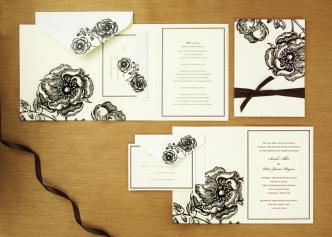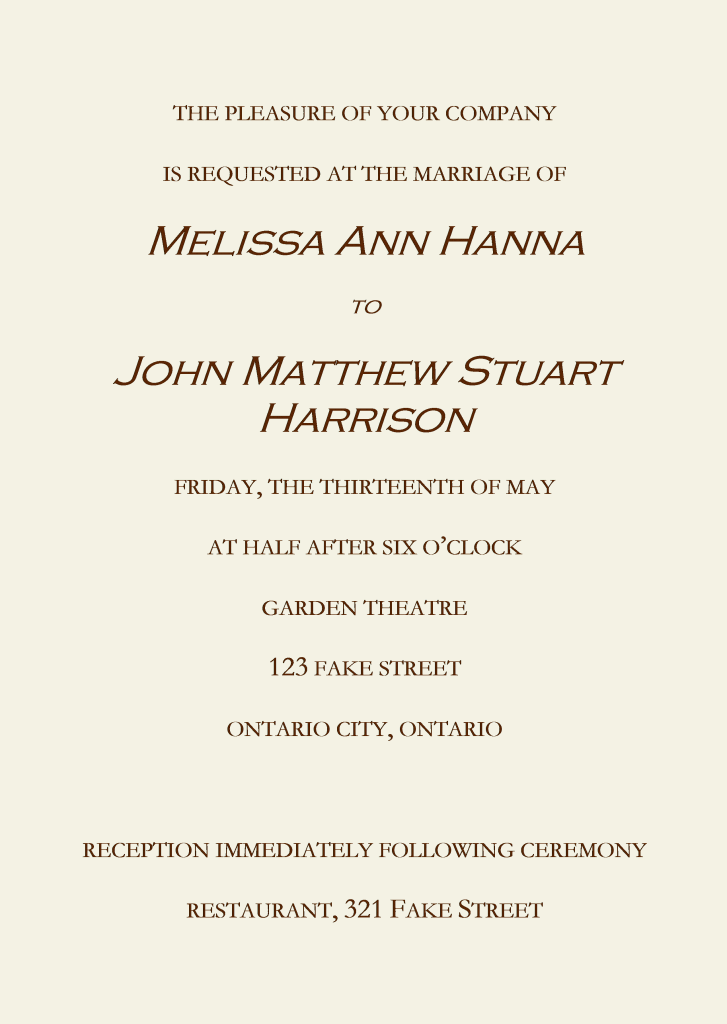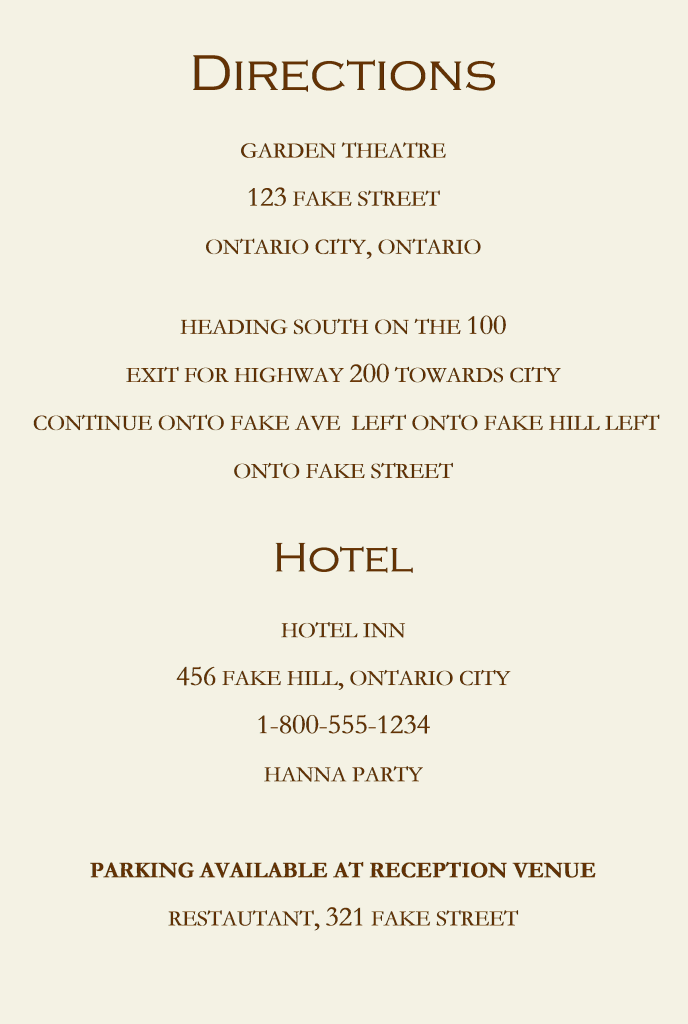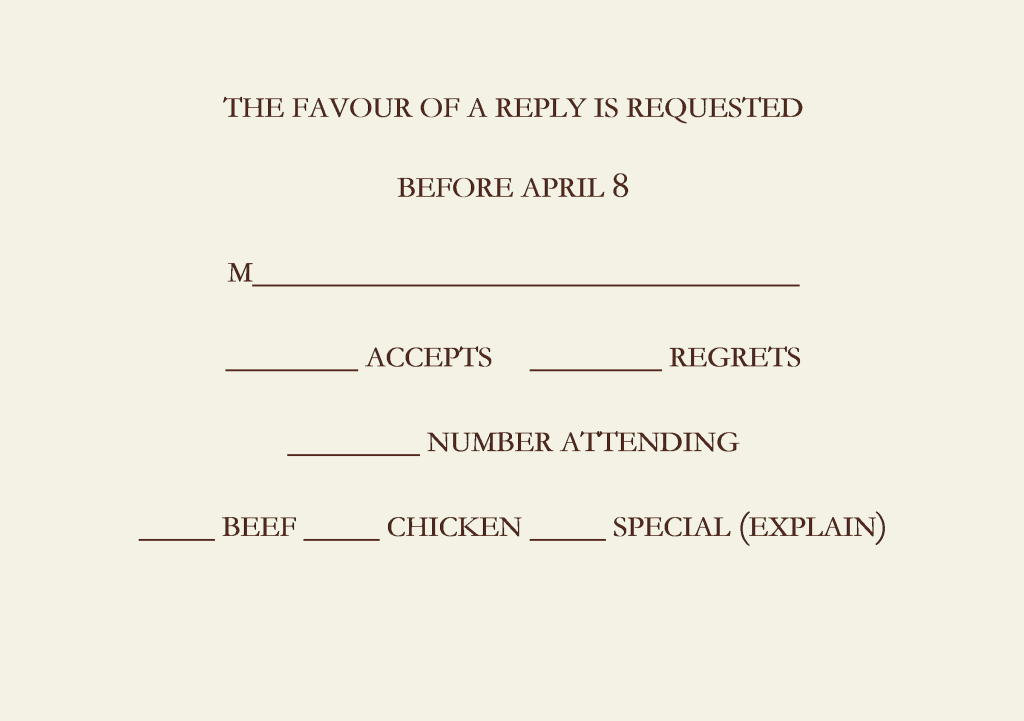Many couples today are following the trend of making their own wedding invitations using do-it-yourself kits, and why not, you can buy any pone of the multitudes of pretty designs, write exactly what you want and conform to no man – all at a fraction of the price of sending them out to be professionally done. For me, finding the perfect wedding invitation kit was almost as emotional as finding the perfect wedding dress. It took me forever to make a decision, fearing that I would settle for one style only to find one I liked better the next day. Of course this fear was realised every time I stepped into the wedding isle of my local craft supply store to pick up another item for the wedding. Eventually I had to say to myself, “the invitations you picked have pleased your mother, the toughest battle has been won,” and stop worrying that a more perfect option would or had come around. Aside from this inevitable circumstance, the whole process was a primarily positive experience. I would recommend this option to any bride on a budget.
Unfortunately, the time to make your wedding invitations comes at the most stressful stage of planning your wedding, the time when all of the tasks on your wedding to-do list seam to overlap each other. If you want your fiancé’s help or desire his input for the invitation making process remember that his stress level is probably equal to or greater than your own. If you have a particularly grumpy fiancé, as I do, his cantankerousness will probably be reaching critical mass at this time, so try to approach him at a good time and remember to give him lots of little breaks, all this wedding invitation business will take a few hours to complete.
When purchasing your wedding invitation kits, make sure you calculate to have a few extras of everything; you will most likely muck up your first few printing attempts, and if you don’t, you’ll have some to save as sentimental keepsakes. Many kit makers will throw in a “baker’s dozen” to help combat this problem but you can’t count on it. The kit I purchased actually had extras of most components, but conversely, it was short on some others.
Instead of being straightforward about the level of formality with which you would like your guests to dress for your wedding, and printing it on your invitations – because etiquette is never about being straightforward – you should use the look and style of your invitations to convey the answer to your guests. For example, if you want anything formal to black-tie, you should choose an invitation with crisp white paper, a firm boarder and a more elegant font. My fiancé and I want a simple, garden-party-attire feel for our wedding so we chose an invitation with cream coloured paper, an unconventionally placed flower design and we chose a less formal font.
Somewhat fascinatingly, the wording of a wedding invitation hasn’t changed from the time of the etiquette book, The Etiquette of New York To-day, written in 1906 by Mrs. Frank Learned, that I purchased from an antique shop. The recommended wording examples from the makers of the invitation kit I was using were, word for word, exactly the same as the examples given in the hundred-year-old book. Again, to imply a more casual air, we went with the least formal wording example, which is as follows:
As you see, the time can be written out all fancy-like, which excited me a little too much.
Even in the age of Google Maps, you still need to include directions in your invitation package. You need to provide driving directions to your ceremony and you should provide directions to your reception if it is located somewhere different or far away from your ceremony venue. You should also dedicate some space in your invitation package to recommend a hotel for your traveling guests to stay at. My mom was nice enough to book a group of rooms for people to call in and book, so I provided my guests with the appropriate information to do so. Don’t forget to let your guest know where they can park, especially if the situation could get hairy. We managed to fit all of this information on one card:
There are many ways to write your RSVP, or response, cards. Most examples choose to have a line preceded by an “M” where guests can write in their own names, though some couples choose to do away with the “M” and provide their guests with the opportunity to write their own title, as not all begin with an “M” – “Dr.” and various military titles, for example. I like the “M” however; it lets inexperienced guests know, “this is where you write your name.” Then you provide your guests with a way to reply either as a “yes” or a “no”, with a stiff deadline attached, usually a month before the date of the wedding. This can be done in many ways and can be a place to get creative for less formal weddings. If your reception venue requires a meal selection count before your event, this is the place to ask your guests what they would like. A small self addressed and stamped envelope should be included in your package for people to mail you their RSVP cards. This is how we chose to do our RSVP cards:
We were too tired to be creative at that point I think.
You can include bridal registry information in your wedding invitation package if you like, but beware; it is highly frowned upon, and even forbidden, in some etiquette circles. If you do not include this information, make sure you tell your mothers and bridesmaids where you are registered so they can help spread the word.
Highly formal invitations will have an outer envelope for postal purposes and an inner envelope with the guests’ names on it. Most invitation kits provide you with one envelope where you write both your guests’ names and their addresses. This is how you denote who specifically is invited, especially in the case of an adult only reception. There are an overwhelmingly large amount of living situations and professional titles that must be observed when addressing your invitations. I found this website to be very helpful.
When you have completed your do-it-yourself wedding invitation packages, take one to your local post office to have it weighed and measured so you can buy the required stamps. Don’t forget to count your invitations before you go, buy regular stamps for the RSVP envelopes and tell person helping you if you will be sending any invitations out of the province or country. You can send your wedding invitations out up to three months before the date of your wedding but make sure you get them out at least six weeks before the big day, to ensure you have given your guests enough notice to avoid scheduling conflicts. Then sit back and wait for the RSVP cards to return to home, hopefully before the deadline.




